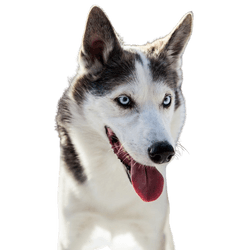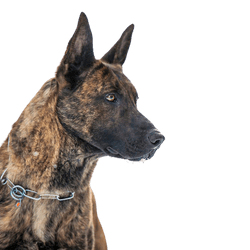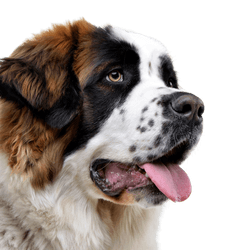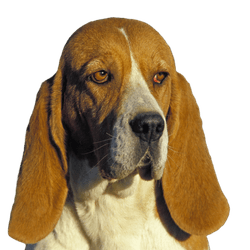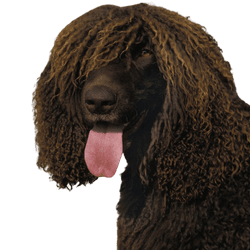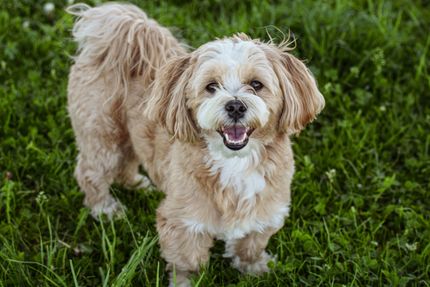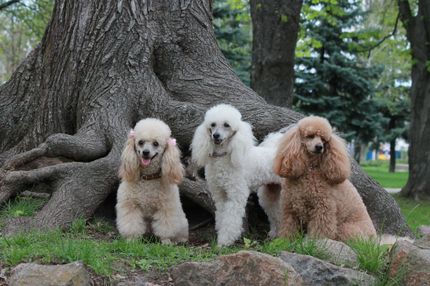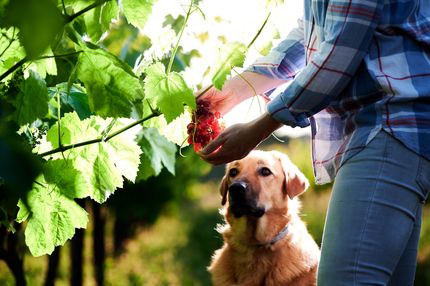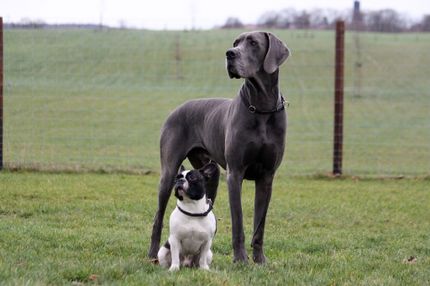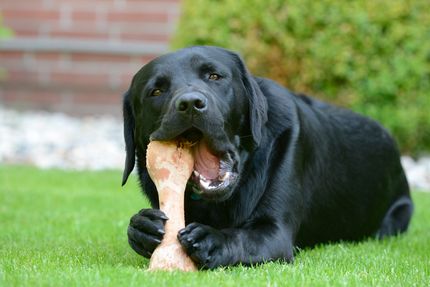Facts & Origin
Origin and history of the Münsterländer
The Münsterländer is a German hunting dog breed that has been bred since the 19th century. However, the exact origins are unclear and there are various theories as to how the breed developed. It can probably be assumed that it is a descendant of the white-colored bird and mordant dog of the Middle Ages.
In 1919, the Münsterländer was recognized as an independent breed by the German Kennel Club. Since then, the breed has been further bred and refined to improve its hunting abilities. In the 1920s, the Münsterländer was divided into two varieties: the Large Münsterländer and the Small Münsterländer.
Differences between the Small and Large Münsterländer
The Large Münsterländer has a higher shoulder height and is mainly used as a pointing dog . The Small Münsterländer is smaller and is used as a pointing and retrieving dog.
Suitability and keeping
The Münsterländer dog of both sizes is called a hunting dog for good reason. Even today, it is still used to search for game and to point found prey.
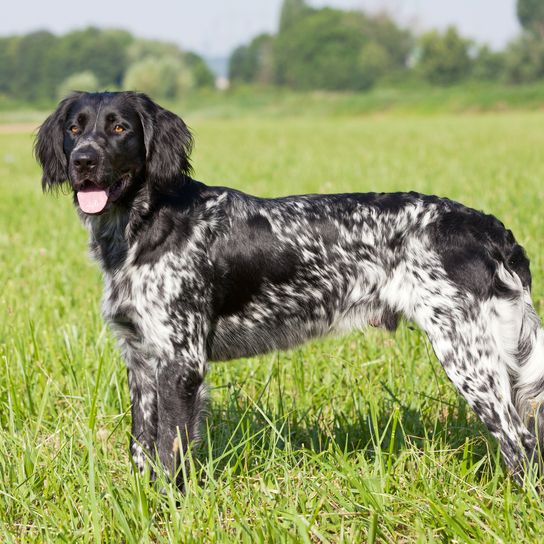
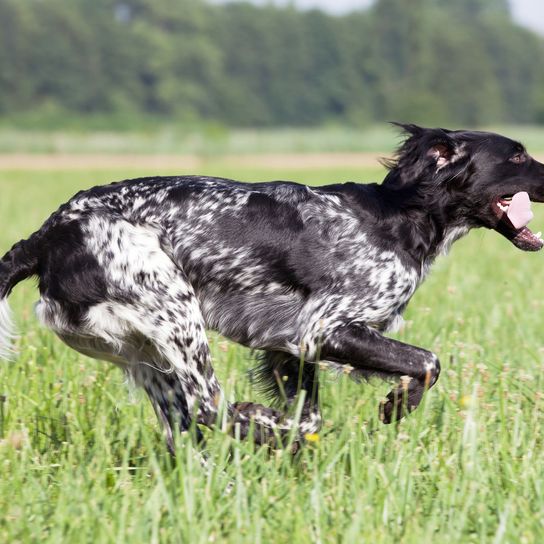
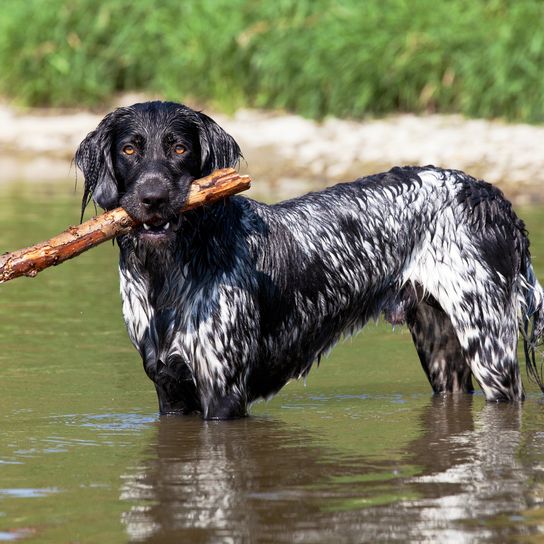
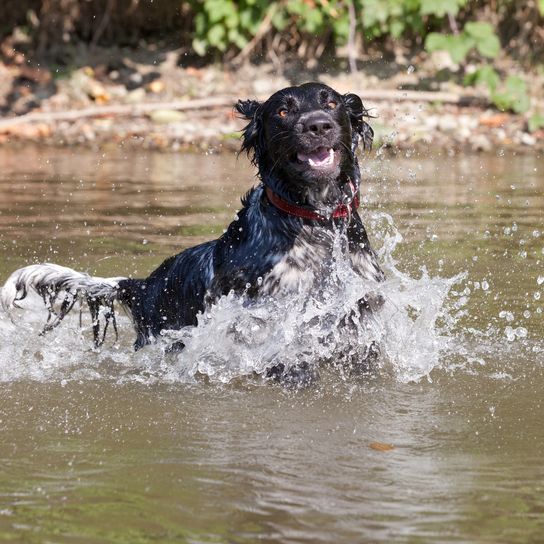
| Alternate Name | Large Münsterländer Pointing Dog |
| Origin | Germany |
| Life expectancy | 11 - 14 years |
| Care requirements | low-maintenance |
| Activity level | average to high |
| FCI group | Continental Pointing Dogs |
| AKC group | Sporting Group |
| KC group | not recognised |
Attitude, character and temperament of the breed
Typical character traits of the Münsterländer
Although the Large Münsterländer is family-friendly and loves children, as an old breed of hunting dog it is characterized by a real working instinct. If you want to buy a Münsterländer like this, you must be willing to work hard and be consistent in your training. Otherwise you will have to look for your Münsterländer every time you go for a walk in the forest.
Keeping and employment opportunities
To keep a Münsterländer, you should already have some dog experience. It must be trained as early as possible to be a family dog, despite its very strong hunting instinct. Once the puppy has been successfully trained, this active dog will be happy to be kept busy outdoors. Retrieving games and sporting activities are the best way to build up their stamina.
You don't need to pay any particular attention to their diet. However, the ratio between activities and energy intake must be balanced for a healthy dog's life. The beautiful, wavy hair needs intensive grooming with a dog brush at least once a week. Otherwise, the priority for both types of this breed is physical and mental exercise.
Character
Usage
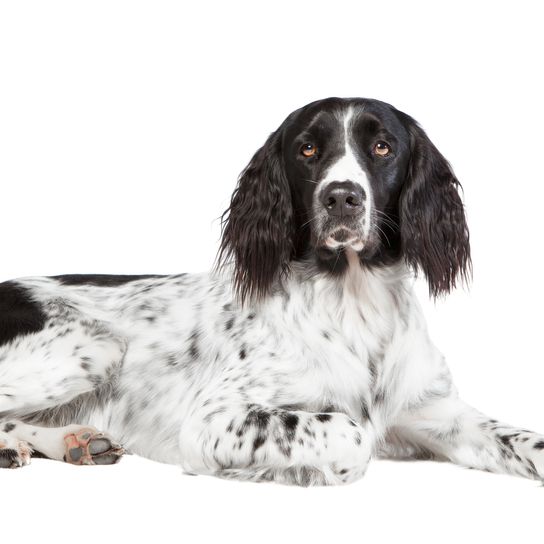
Diseases typical of the Münsterländer breed
Both types of Münsterlander are prone to problems with their teeth and eyes . You can prevent such problems in your dog with good care and regular check-ups. A genetic weakness in the smaller Heidewachtel can be hip joint dysplasia. Skin diseases or ear infections are possible, but more likely due to the nature of the coat and eyes. Autoimmune diseases very rarely occur in the course of a dog's life.
Large Münsterländer breeding and purchase
A responsible Münsterländer breeder works with the parent animals and puppies according to their dispositions right from the start. This is the main way to recognize a reputable breeder:
- The parent animals and puppies have proof of pedigree so that certain character and physical traits can be easily traced.
- Responsible breeders are also competent contacts in the event of problems after the purchase.

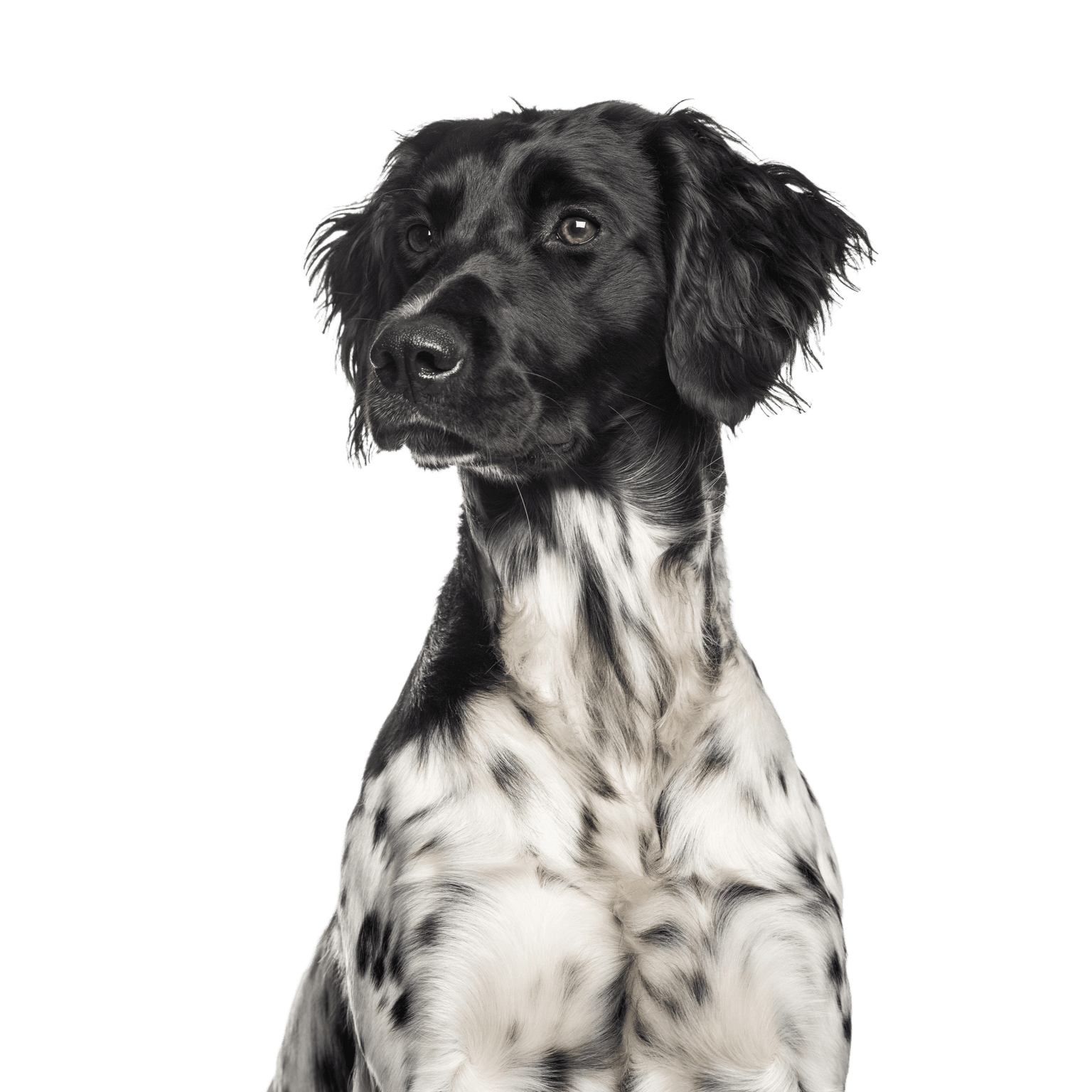
Breed characteristics of the Large Münsterländer
Both types of the Münsterländer are classified by the FCI as Group 7 (Pointing Dogs); Section 1 (Continental Pointing Dogs), 1.2 (Type Spaniel).
The head
The elongated head of the Large Munsterlander is alsonoble with a smart appearance. It has a pronounced chin musculature. The stop is only slight.
The muzzle is strong, long and well developed for use . This dog breed has a straight nasal bridge. A pronounced black nose leather is important. The lips must not overhang. The dentitionis strong and complete (42 teeth according to the dental formula)with pronouncedcanines. Breeding specimens shouldhavea perfectscissor bite.
Eyes and ears
Thedarker the eyes ,thebetter.The eyelids should lie close totheeyeballand have a firm lid closure.
The broad, well-fitting ears are set fairly high with a rounded tip.
The body
The neck is strong, well muscled and elegantly arched. The medium-high withers are long and well muscled, the short back is firm and straight. Further on there are pronounced loins, protected by tight muscles and a long, broad croup, which is only slightly sloping and well muscled. The chest isbroad when viewed from the front, deep when viewed from the side with a clearforechest. Thelower profile is slightly tucked up and appears taut and slender. The flanks are short and set high.
The tail
The tail ofthe Große Münsterländer iscarried horizontallyor slightly upwards . Seenfrom the side, it emerges from the topline without a kink .
The limbs
In general, correct angulation should be present. The shoulder blade lies firmly against the ribs, the upper arm is straight, strong and well muscled. The pastern joint is elastic. The hindquarters arestrongly and tightly muscled.The legs are vertical .
The paws areofmoderatelengthandroundnesswith toes close together. According to the breed standard ,nowolf claws are desired either in front or behind .
The gait
The walk and trot are springy and expansive with a wide forward reach. The canter is elastic, energetic, with the necessary impulsion from the hindquarters and a long jump.
The coat
The Große Münsterländer has a taut coat. The coat is long and dense, but straight, not curly or sticking out, asthis would hinderitsusefor hunting.It is therefore typically longhaired. The coat must beparticularly long anddense (well feathered) on the back of the frontand hind legs of bothmales and females.The hair on the tail should also be particularly long. Thestrongestteeth of the tail should be approximately in themiddle of its length. The hair on theearsshould be long (good fringing) andclearlyoverhang the lower edge of theear(no leather hangings).Otherwise the hair on the head should be shortand close fitting.
Thethree color varietiesare:whitewith black plates and flecks, black moldedor pure black.The head is black, possibly with awhitesnip or blaze.
Size and weight of the Large Munsterlander
The height of males is60-65 cm, of females 58-63 cm. There is an upper tolerance limit of 2 cm. The weight is approximately 30 kg.



FAQ
-
They are generally robust dogs, but can develop genetic conditions such as hip dysplasia or eye problems. Regular veterinary checks and healthy living conditions can help to minimize these risks.
-
They are generally robust dogs, but can develop genetic conditions such as hip dysplasia or eye problems. Regular veterinary checks and healthy living conditions can help to minimize these risks.
-
Yes, they are great family dogs. They are child-friendly and loyal, but need consistent training and plenty of exercise.
-
Their coat requires regular grooming. It should be brushed at least once a week to prevent matting and keep the coat healthy.
-
These active dogs need extensive daily walks and opportunities to run and play. Sporting activities such as agility or fetch games are also ideal.
-
The Große Münsterländer originates from Germany and has its roots in the long-haired breed of German watchdogs. It was originally bred for hunting.



